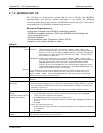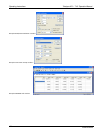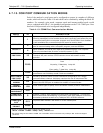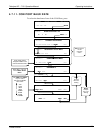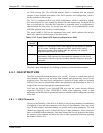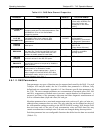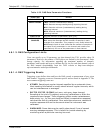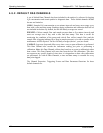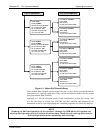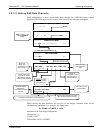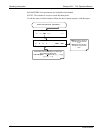
Teledyne API – T101 Operation Manual Operating Instructions
127
Table 4-22. DAS Data Parameter Functions
FUNCTION EFFECT
PARAMETER Instrument-specific parameter name.
SAMPLE MODE INST: Records instantaneous reading.
AVG: Records average reading during reporting interval.
MIN: Records minimum (instantaneous) reading during
reporting interval.
MAX: Records maximum (instantaneous) reading during
reporting interval.
PRECISION Decimal precision of parameter value (0-4).
STORE NUM.
SAMPLES
OFF: stores only the average (default).
ON: stores the average and the number of samples in each
average for a parameter. This property is only useful when the
AVG sample mode is used. Note that the number of samples is
the same for all parameters in one channel and needs to be
specified only for one of the parameters in that channel.
4.8.1.3. DAS Configuration Limits
Users can specify up to 50 parameters per data channel (the T101 provides about 30
parameters). However, the number of DAS objects are limited by the instrument’s finite
storage capacity. For information regarding the maximum number of channels,
parameters, and records and how to calculate the file size for each data channel, refer to
the DAS manual downloadable from the TAPI website at http://www.teledyne-
api.com/manuals/ under Special Manuals.
4.8.1.4. DAS Triggering Events
Triggering events define when and how the DAS records a measurement of any given
data channel. Triggering events are firmware-specific and are listed in Appendix A. The
most common triggering events are:
ATIMER: Sampling at regular intervals specified by an automatic timer.
Most trending information is usually stored at such regular intervals, which
can be instantaneous or averaged.
EXITZR, EXITSP, SLPCHG (exit zero, exit span, slope change):
Sampling at the end of (irregularly occurring) calibrations or when the
response slope changes. These triggering events create instantaneous
data points, e.g., for the new slope and offset (concentration response)
values at the end of a calibration. Zero and slope values are valuable to
monitor response drift and to document when the instrument was
calibrated.
WARNINGS: Some data may be useful when stored if one of several
warning messages appears. This is helpful for trouble-shooting by
monitoring when a particular warning occurred.
07266B DCN6485



